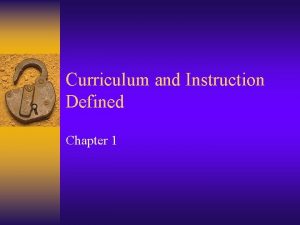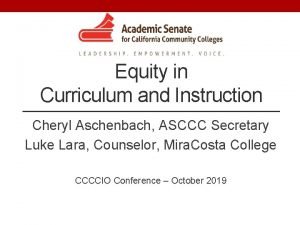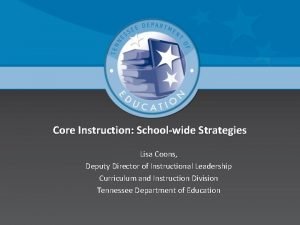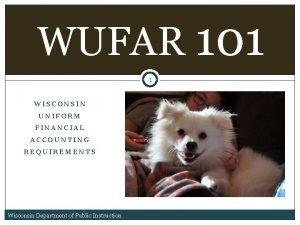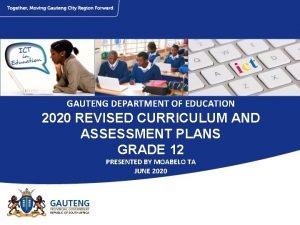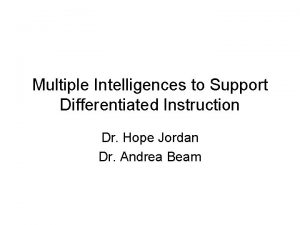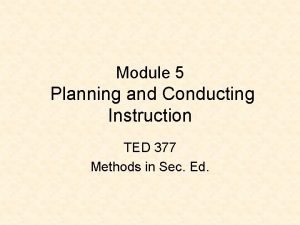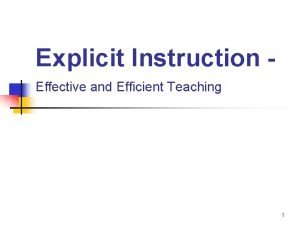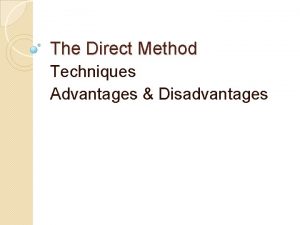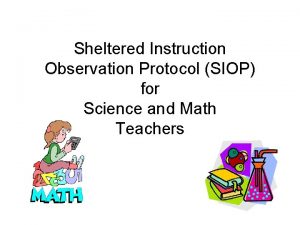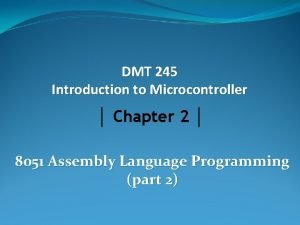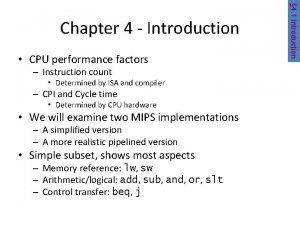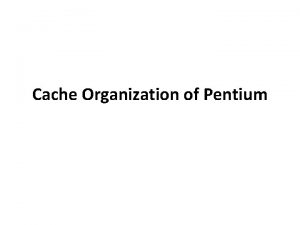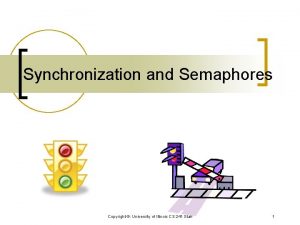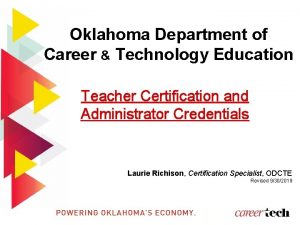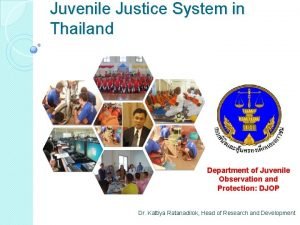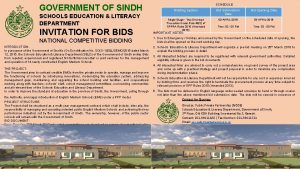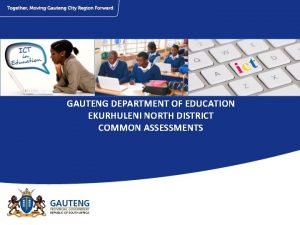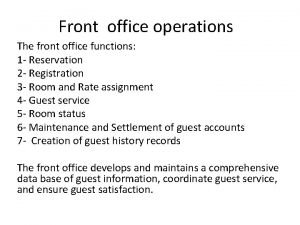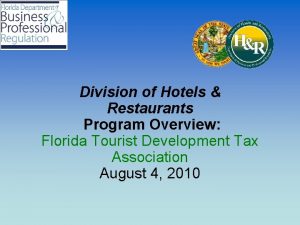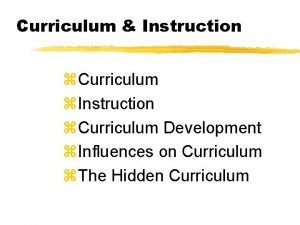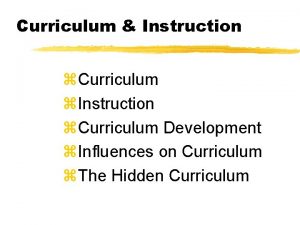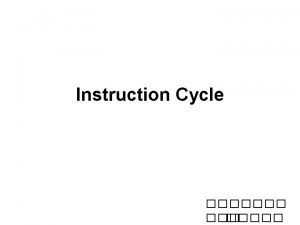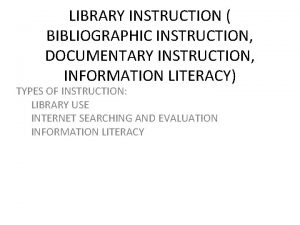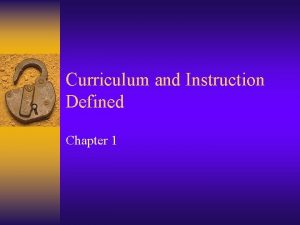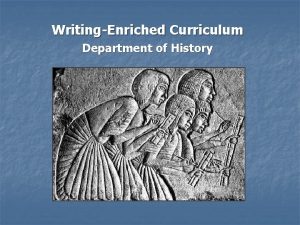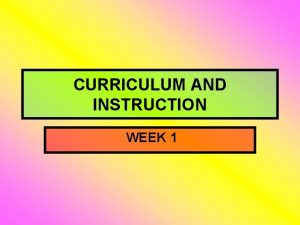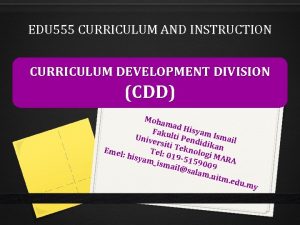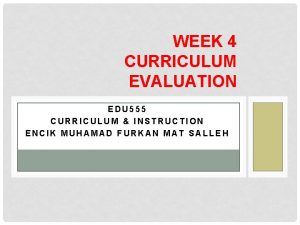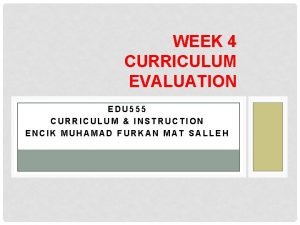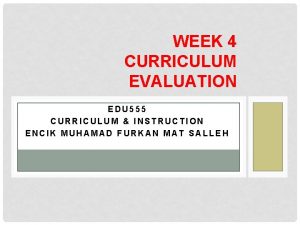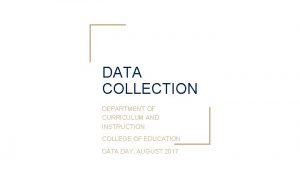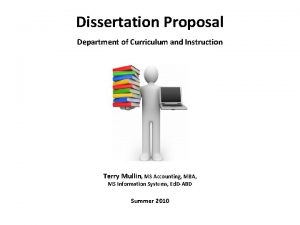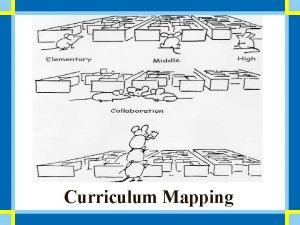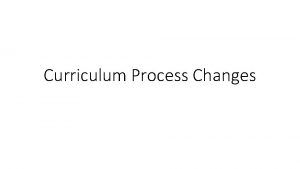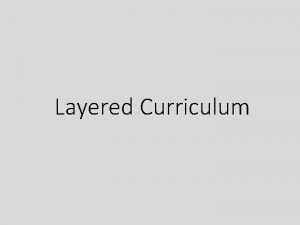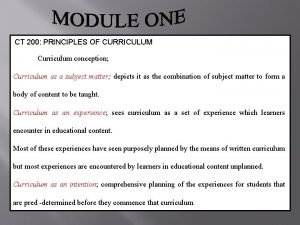EDUCATEElmore Department of Curriculum and Instruction Welcome n

































- Slides: 33

EDUCATEElmore Department of Curriculum and Instruction

Welcome! n Introductions n Agenda n Handouts 2

New Evaluation Systems to align with the Standards New teacher evaluation system will go into effect September 1, 2009, for all evaluators of teachers. Over 3500 instructional leaders will experience a professional study during the 2009 -2010 school year. Evaluation toolkit for Superintendents and evaluation systems for specialty areas, instructional leaders and central office staff will be in place Fall 2010. 3

About EDUCATEAlabama Approved by the Alabama State Board of Education - May 14, 2009, Board Meeting. The Elmore County Board of Education adopted EDUCATEAlabama as its method of formally evaluating teachers at its July 20, 2009 meeting. A copy of the Elmore County Board of Education Policy can be found in the EDUCATEElmore Manual. The purpose of this new method of evaluating teachers is to provide administrators and teachers with a collaborative, formative tool to enhance teaching and learning. The goal of the new process ◦ ◦ Increase student achievement Increase the graduation rate NO numerical scores; teacher is now rated using following levels: ◦ ◦ Emerging Applying Integrating Innovating

Overview of the Orientation Process Part 1 introduces teachers to Alabama’s new, formative, teacher evaluation system – EDUCATEAlabama. Part II is done by the principal or other administrator in your school system. The entire module is divided into 9 lessons ◦ ◦ ◦ ◦ ◦ Lesson 1: Lesson 2: Lesson 3: Lesson 4: Lesson 5: Lesson 6: Lesson 7: Lesson 8: Lesson 9: Major Changes Alabama Quality Teaching Standards The EDUCATEAlabama Continua How the process works? Teacher Self-Assessment Classroom Observations Dialogue and Principal Data Collaborative Summary Report Professional Learning Plan

Overview of the Orientation Process Specific objectives of the module are: ◦ To familiarize you with the Alabama Quality Teaching Standards (AQTS) and the evaluation process developed around them. ◦ To explain how the new, collaborative EDUCATEAlabama process works. ◦ To familiarize you with the instruments and procedures your evaluator and you will use in the process. As we review the module, you will need nothing but paper and pencil to take notes and/or develop attachments for later reference.

For additional information regarding the major changes from PEPE to EDUCATEAlabama, please refer to your online EDUCATEAlabama Module pages 2 -3. 7

The Alabama Quality Teaching Standards As stated earlier, EDUCATEAlabama was developed based on the Alabama Quality Standing Standards. You need to review now the EDUCATEAlabama version of the AQTS. To do so click on the following link: EDUCATEAlabama version of AQTS. As you review these standards, here are some “look fors”: 1. Look for and name the titles of the five teaching standards. 2. Look for standards that contain “sub-standards’ (2 a, 2 b, etc. ) and note what they are. 3. Look for the titles of the performance indicators (1. 1, 2 a. 1, etc. ) which define emphases/expectations within each indicator. 4. Look for the capital letters (B/E, A, etc. ) beside each definition item within an indicator. Note particularly the INT and INN designations. These letters stand for Beginning/Emerging (B/E), Applying (A), Integrating (INT), and Innovating (INN). 5. Look for “cross-cutting expectations”, i. e. , expectations for teacher practice that are contained in several standards, not just a single standard. Hint: Many of these expectations are found in definition items (the items that define performance indicators). For example, look for expectations regarding collaboration, leadership, addressing learner differences, etc. in more than one Indicator and/or Standard. When you have finished your review of the AQTS: EDUCATEAlabama version, read pages 5 and 6 for additional feedback on what you should have found.

Alabama Quality Teaching Standards Standard 1 – Content Knowledge To improve the learning of all students, teachers master the disciplines related to their teaching fields including the central concepts, important facts and skills, and tools of inquiry; they anchor content in learning experiences that make the subject matter meaningful for all students.

Alabama Quality Teaching Standards Standard 2 - Teaching and Learning To increase the achievement of every student, teachers draw upon a thorough understanding of learning and development; recognize the role of families in supporting learning; design a student-centered learning environment; and use research-based instructional and assessment strategies that motivate, engage, and maximize the learning of all students.

Alabama Quality Teaching Standards Standard 3—Literacy To improve student learning and achievement, teachers use knowledge of effective oral and written communications, reading, mathematics, and technology to facilitate and support direct instruction, active inquiry, collaboration, and positive interaction.

Alabama Quality Teaching Standards Standard 4—Diversity To improve the learning of all students, teachers differentiate instruction in ways that exhibit a deep understanding of how cultural, ethnic, and social background; second language learning; special needs; exceptionalities; and learning styles affect student motivation, cognitive processing, and academic performance.

Alabama Quality Teaching Standards Standard 5—Professionalism To increase the achievement of all students, teachers engage in continuous learning and selfimprovement; collaborate with colleagues to create and adopt research-based best practices to achieve ongoing classroom and school improvement; and adhere to the Alabama Educator Code of Ethics and federal, state, and local laws and policies.

14

EDUCATEAlabama Continua The EDUCATEAlabama Continua ◦ Contains all standards, indicators, and definition items. ◦ Developed using the AQTS. ◦ Has four levels of performance: emerging, applying, integrating, and innovating. To access the entire continua, please see directions within the second paragraph on page 7 of the orientation module.

EDUCATEAlabama Continua 16

1. 1 Deep Knowledge of Subject Matter EMERGING Uses knowledge of subject matter to design rigorous units and lessons. Teaches appropriate to age and developmental levels. APPLYING Incorporates resources to motivate and academically challenge all learners. INTEGRATING Focuses instruction on key concepts, themes, multiple perspectives, and interrelationships in subject matter, as well as facts. Works with colleagues to plan units and lessons that serve to immerse learners actively in the discipline and to think analytically and creatively about the content. INNOVATING Uses comprehensive knowledge of subject matter and student development to ensure that all learners understand related facts and concepts within and across content areas. Introduces students to current advances related to the discipline, knowledge of which has been gained from journals, websites, and other sources. Collaborates with colleagues to incorporate research findings into unit

Pages 10 & 11 of the orientation module provides additional details regarding the above components of EDUCATEAlabama.

Teacher Self-Assessment Used early in the school year. Shared with evaluator at Collaborative Summary Conference ONLY. Important Statements!!! “At the time of the Collaborative Summary Conference, the evaluator will share his/her initial draft of the Collaborative Summary Report (CSR) and the data/information used to designate the teacher’s level of practice in each of the 39 performance indicators. As this process is carried out, the teacher should share his/her self-assessment in each indicator and the data/information he/she has used to arrive at each self-determined level of practice – particularly where there are discrepancies between evaluator and teacher levels of practice designations. Discrepancies can be resolved in the final version of the CSR. In some cases, the teacher may introduce data/information of which the evaluator has not been aware. In other cases, the evaluator’s data/information may be more comprehensive than that used by the teacher. The Collaborative Summary Conference should be a meaningful conversation between the evaluator and the teacher to determine indicator areas of strengths and weaknesses and to develop a plan for improvement. ” “The final CSR and the teacher’s Self-Assessment will then become the basis for developing the Professional Learning Plan. Every teacher will have a Professional Learning Plan and be engaged in its completion at all times. Professional learners are always learning and improving practices. ” To access the Teacher Self-Assessment, please see directions within the fourth paragraph on page 12 of the orientation module. This page also contains additional information regarding the Teacher Self-Assessment for EDUCATEAlabama.

Classroom Observations Each teacher will be observed twice. Observations are ◦ unannounced ◦ 45 minutes Observations are to be completed by April 2010. Additional information can be found on pages 13 -15 of the orientation module.

Teacher Observation Record

Post-Observation Conference Record 22

Page 2 of Post Observation Record

Dialogues and Principal Data A more detailed explanation of dialogues between the teacher and the evaluator can be found on pages 16 & 17 of the orientation module.

Collaborative Summary Report Additional information regarding the Collaborative Summary Report can be found on pages 18 & 19 of the orientation module. 25

Professional Learning Plan 26

Conversion from PDP to PLP ALL teachers—regardless of placement in the evaluation cycle—will develop a PLP in May 2010. Additional information about the PLP can be found on pages 20 & 21 of the orientation module.

Elmore County Board of Education EDUCATEElmore Resource Forms

Important Dates for Teachers Teacher Orientation ◦ 2 parts large group orientation small group/individual session with evaluator Observations – completed by April 2010 Dialogues – ongoing; completed by March CSR/PLP – April School and District Analysis – May

EDUCATEElmore A system-developed EDUCATEElmore manual, based on EDUCATEAlabama, was made available the week of August 18. This manual outlines procedures and guidelines for conducting the teacher evaluation process. Read the manual carefully; ask questions of your principal or his/her designee during the second part of the orientation. Please keep in mind the importance knowing the procedures and guidelines of this new evaluation process before you are evaluated.

EDUCATEElmore The following documents are posted on the Curriculum/Instruction page of the Elmore County website www. elmoreco. com : ◦ ◦ ◦ Orientation Power. Point EDUCATEAlabama Teacher Orientation Module Steps in the Teacher Evaluation Process EDUCATEAlabama Teacher Evaluation Manual FAQ’s about EDUCATEAlabama

Central Office Contact Please direct all questions regarding EDUCATEAlabama/EDUCATEElmore to Dr. Andre` L. Harrison, Evaluation Coordinator andre. harrison@elmore. k 12. al. us

Thank you! Now let’s EDUCATEElmore County! EDUCATEElmore
 Concentric model of curriculum
Concentric model of curriculum Curriculum and instruction
Curriculum and instruction Curriculum and instruction
Curriculum and instruction Differentiated instruction vs individualized instruction
Differentiated instruction vs individualized instruction Indirect instruction definition
Indirect instruction definition Wufar
Wufar Welcome transport department
Welcome transport department Wise men three clever are we
Wise men three clever are we Vision and mission of gauteng department of education
Vision and mission of gauteng department of education Welcome to curriculum night
Welcome to curriculum night Welcome to curriculum night
Welcome to curriculum night Departmental accounting helps in
Departmental accounting helps in Multiple intelligences and differentiated instruction
Multiple intelligences and differentiated instruction Planning and conducting instruction in the classroom
Planning and conducting instruction in the classroom Difference between procedure and work instruction
Difference between procedure and work instruction Disadvantages of gagne's instructional events
Disadvantages of gagne's instructional events Explicit instruction effective and efficient teaching
Explicit instruction effective and efficient teaching Advantages and disadvantages of reading aloud
Advantages and disadvantages of reading aloud Pros and cons of sheltered instruction
Pros and cons of sheltered instruction Flag register of 8051 microcontroller
Flag register of 8051 microcontroller Instruction count is determined by isa and cpu hardware.
Instruction count is determined by isa and cpu hardware. Disadvantages of content based instruction
Disadvantages of content based instruction The pentium has kb instruction and kb data cache.
The pentium has kb instruction and kb data cache. Test and set
Test and set Undss logo
Undss logo Nevada department of business and industry
Nevada department of business and industry National risk ambulance
National risk ambulance Oklahoma alternative placement program
Oklahoma alternative placement program Louisiana department of health and hospitals
Louisiana department of health and hospitals Department of juvenile observation and protection
Department of juvenile observation and protection Sindh education and literacy department
Sindh education and literacy department Gde vision and mission statement
Gde vision and mission statement Function and operation of front office department
Function and operation of front office department Department of hotels and restaurants florida
Department of hotels and restaurants florida
